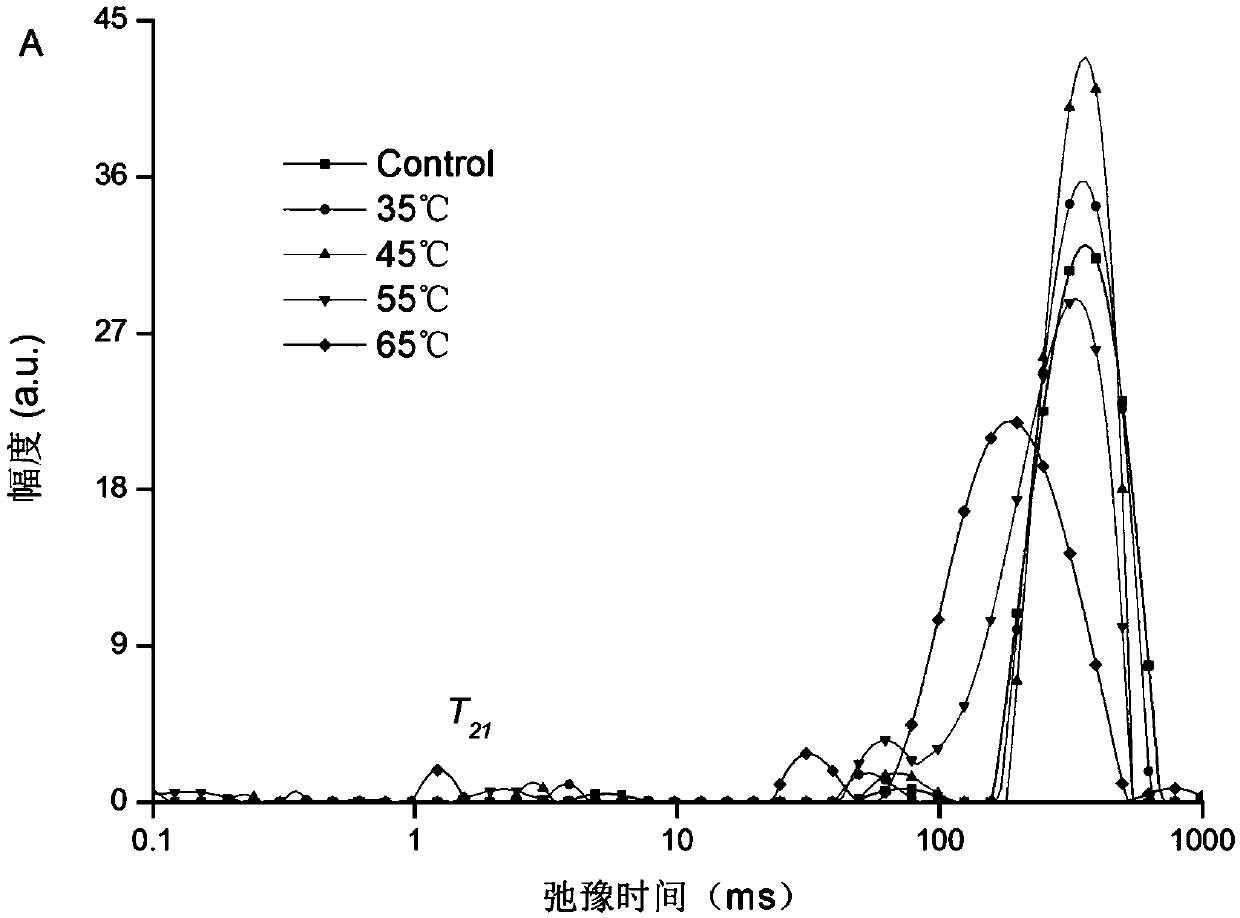Low-temperature sea cucumber heating and tenderizing method
A sea cucumber and tenderization technology, which is applied in the direction of testing food, preparation of test samples, material inspection products, etc., can solve the problems of lack of pertinence, backward detection methods, and uneven quality of ready-to-eat sea cucumbers, and achieve quality improvement and increase The effect of improving detection speed and accuracy
- Summary
- Abstract
- Description
- Claims
- Application Information
AI Technical Summary
Problems solved by technology
Method used
Image
Examples
Embodiment 1
[0047] Embodiment 1 Low-field nuclear magnetic test determines the suitable temperature for low-temperature heating tenderization
[0048] Transverse relaxation analysis of sea cucumbers and heat-treated sea cucumbers by CPMG sequence: the samples obtained in step 2 of sea cucumber raw material pretreatment were put into the MiniMR-Rat magnetic resonance imaging analyzer for measurement, and the obtained results were determined by one-dimensional inverse Laplacian algorithm. Transverse relaxation time spectrum inversion algorithm to obtain the transverse relaxation spectra of sea cucumber samples at different heating temperatures; T 1 weighted imaging and T 2 Weighted imaging. Transverse relaxation data T 2 The measurement conditions are: 90 degrees pulse width P 1 :13μs, 180 degree pulse width P 2 : 26μs, re-sampling waiting time Tw: 5000ms, analog gain RG1: 15, digital gain DRG1: 3, preamplifier gain PRG: 1, NS: 8, NECH: 15000, receiver bandwidth SW: 200KHz, start sampli...
Embodiment 2
[0054] Example 2 Dynamic rheology method to determine the appropriate time period of low temperature heating tenderization stage
[0055] The sample obtained in step 3 of sea cucumber raw material pretreatment was placed on the stage of a rheometer (rotational rheometer Discovery DHR, Thermal Analysis Instruments, Inc., USA). The temperature parameters of the rheometer were set to 45°C for the heat preservation experiment. The rheological test conditions are: the fixture is a 40mm parallel plate, the slit is 0.5mm, the strain is 1%, and the frequency is 0.1Hz. Test procedure: the holding time is 0-120min, the temperature is 45°C. Rheological indicators such as G’, G” and tanδ are automatically recorded as the temperature changes, and each sample is repeated 3 times.
[0056] The optimum heating time is obtained by analyzing the results:
[0057] The quality of meat products is mainly determined by its protein content, texture, rheology and other properties. Therefore, the r...
Embodiment 3
[0058] Embodiment 3 simple scanning electron microscope image analysis carries out tenderization result verification
PUM
 Login to View More
Login to View More Abstract
Description
Claims
Application Information
 Login to View More
Login to View More - R&D
- Intellectual Property
- Life Sciences
- Materials
- Tech Scout
- Unparalleled Data Quality
- Higher Quality Content
- 60% Fewer Hallucinations
Browse by: Latest US Patents, China's latest patents, Technical Efficacy Thesaurus, Application Domain, Technology Topic, Popular Technical Reports.
© 2025 PatSnap. All rights reserved.Legal|Privacy policy|Modern Slavery Act Transparency Statement|Sitemap|About US| Contact US: help@patsnap.com



